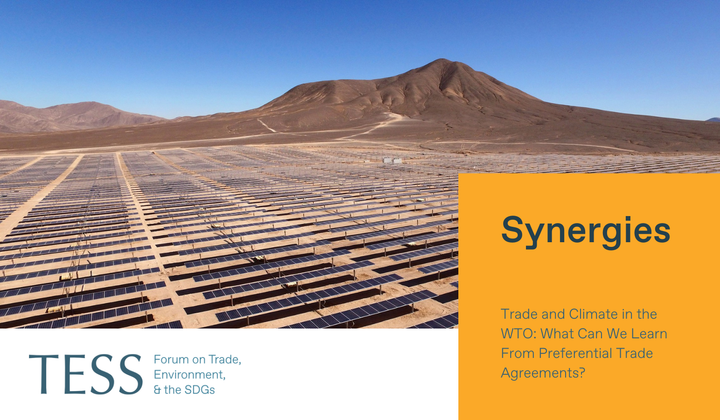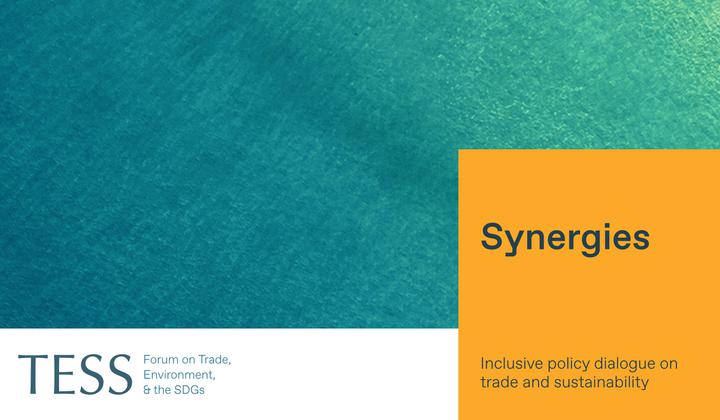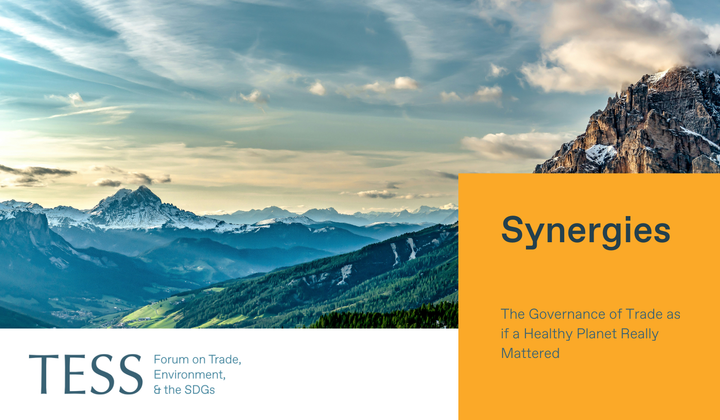A mechanism created by the North American Free Trade Agreement and replicated in several trade agreements concluded by the United States offers civil society actors a platform to formally report when a party to a trade agreement fails to effectively enforce its environmental laws.
Incorporating environmental provisions into free trade agreements creates opportunities to address environmental protection failures. In particular, trade agreements can enable public participation in environmental governance. A key mechanism in that regard is the Submissions on Enforcement Matters (SEM) process created by the North American Free Trade Agreement (NAFTA) and replicated in several trade agreements concluded by the United States (US).
SEMs offer civil society actors, including individuals and non-governmental organizations (NGOs), a platform to formally report when a party to a trade agreement fails to effectively enforce its environmental laws. However, challenges remain in ensuring the effectiveness of the process, and reforms are needed to ensure that trade agreements further contribute to sustainable development.

Trade Agreements With a SEM Process
How Do SEMs Work?
The SEM process is divided into several stages, with increasing levels of scrutiny and potential governmental accountability at each step:
- Initial Screening: Once a submission is filed, it must first pass an initial screening process performed by a secretariat on enforcement matters created under the relevant trade agreement to ensure that it meets certain formal criteria, including the provision of sufficient evidence and a clear identification of the submitter and the alleged violation of environmental laws.
- Government Response: If a submission passes the initial screening, the concerned government is invited to respond to the allegations. This response may contain explanations, justifications, or actions that have been taken to address the issues raised.
- Factual Record Development: In cases where serious unresolved issues remain, the process may culminate in the development of a factual record. This record is a detailed and independent account of the environmental concerns raised in the submission, providing an in-depth investigation and documentation of the situation.
Between 1995 and 2022, only 26% of the 158 submissions resulted in the production of factual records. For instance, certain countries, such as Mexico and Guatemala, are targeted by a high number of submissions. These countries have active civil societies that regularly engage with the SEM process to raise concerns about environmental law enforcement and, arguably, pressure their government to take action. However, while Mexico received the highest number of factual records, Guatemala received none. Out of the 16 submissions filed against Guatemala under the CAFTA-DR agreement, 10 failed at the initial screening stage, often for lack of clear identification of the allegedly violated environmental laws.
The rate of factual record production may seem modest but should be understood within the broader objectives of the SEM process, which is not necessarily designed to lead to factual records for every submission. Instead, its primary function is to encourage dialogue between civil society and governments and to promote transparency in the enforcement of environmental laws. Even when a submission does not result in a factual record, it can still have a significant impact by prompting a government to respond formally to the allegations, increasing public awareness of the environmental issue, or leading to improvements in the enforcement of environmental laws.

Total Submissions and Factual Records by Country (1995–2022)
Factors Influencing SEM Success
Although current findings can only explain a limited number of SEM cases, they provide important insights into the factors that contribute to the likelihood of a submission reaching the factual record stage:
- Recurrent Issues: Submissions that address issues that have been raised in previous complaints are more likely to succeed than new submissions. This may be because repeated submissions attract more attention from governments, international bodies, and the public, thus creating more pressure for action. Submissions that build on prior documentation and evidence also benefit from a more developed knowledge base, making it easier for the SEM process to move forward.
- Targeted Governments: Submissions aimed at developing countries (in this case, Latin American countries) more often result in factual records than submissions targeting developed nations like the US or Canada. This difference may reflect disparities in governance structures. For one, the US and Canada possess significantly greater financial and technical resources compared to developing countries, enabling them to respond more effectively to secretariat inquiries. In addition, developing countries often have fewer, or less efficient, domestic legal channels for their civil society to address failures in environmental law enforcement, limiting alternatives to the SEM process and thereby making developing countries more likely to have submissions filed against them.
- NGO Involvement: Submissions that are supported by NGOs, particularly those with legal and technical expertise, are more likely to succeed than submissions filed by individuals or smaller grassroots organizations. NGOs bring resources, experience, and credibility to the submission process, which can improve the quality of the submission and increase its chances of advancing through the SEM stages.

What Can We Learn From Previous SEMs?
- Support for Civil Society and NGOs: Governments and international organizations should enhance their support for civil society actors by providing resources for legal and environmental research, technical assistance in preparing submissions, and training on how to navigate the SEM process. This support will enable more submissions to meet the procedural requirements and advance through the process.
- Improving Accessibility: Many submissions fail at the initial screening stage due to procedural errors or incomplete documentation, rather than substantive flaws in the case. Simplifying the submission process, offering clearer guidelines, and making the process more accessible will help increase the number of submissions reaching the factual record stage. By reducing procedural barriers, more members of civil society will also be able to engage meaningfully with the SEM process.
- Building Capacity in Developing Countries: Developing countries tend to have higher numbers of submissions and factual records against them. There is a need for continued capacity building to ensure that governments in these countries can respond effectively to submissions. International organizations and trade agreement partner countries should provide support to help these governments engage more constructively with the SEM process and improve their environmental law enforcement systems.
- Enhancing Transparency: Secretariats on enforcement matters should commit to greater transparency in how they handle SEMs. This includes publishing regular updates on submission progress and ensuring that factual records are made publicly available in a timely manner. Transparency can build public trust in the SEM process. Moreover, governments should establish clearer follow-up procedures to outline how they plan to address the issues raised in factual records. This would help ensure that the SEM process leads to tangible improvements in environmental governance, rather than merely documenting problems.
- Expanding SEM Mechanisms Beyond the Americas: Currently, SEM mechanisms are only incorporated in NAFTA and subsequent trade agreements involving the US and its Latin American trade partners. There is a strong case for extending the SEM process to agreements outside of this region. Given the increasing number of trade agreements worldwide, incorporating citizen complaint mechanisms into these agreements would allow broader international participation in environmental law enforcement. A notable innovation is the European Union Single Entry Point, launched by the Commission in November 2020. This mechanism consists of a centralized contact point for complaints about non-compliance with commitments under the Trade and Sustainable Development provisions of EU trade agreements. However, this mechanism is only accessible to actors based in the EU and may only target EU trading partners.
----------
Noémie Laurens is postdoctoral researcher at the Geneva Graduate Institute, an Earth Negotiations Bulletin (ENB) writer, and book review editor of the Earth System Governance Journal.
-----
Synergies by TESS is a blog dedicated to promoting inclusive policy dialogue at the intersection of trade, environment, and sustainable development, drawing on perspectives from a range of experts from around the globe. The editor is Fabrice Lehmann.
Disclaimer
Any views and opinions expressed on Synergies are those of the author(s) and do not necessarily reflect those of TESS or any of its partner organizations or funders.
License
All of the content on Synergies is licensed under a Creative Commons Attribution-NonCommercial-ShareAlike 4.0 International (CC BY-NC-SA 4.0)
license. This means you are welcome to adapt, copy, and share it on your
platforms with attribution to the source and author(s), but not for
commercial purposes. You must also share it under the same CC BY-NC-SA
4.0 license.
If you would like to reuse any material published here or if you have any other question related to Synergies, send an email to fabrice.lehmann@graduateinstitute.ch.




